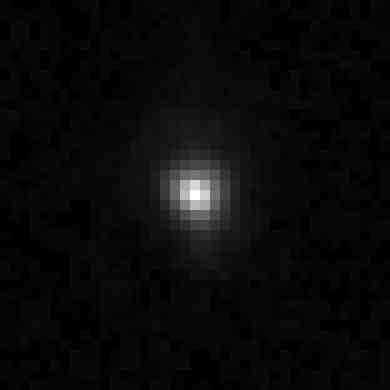The DWARF PLANETS
The initial discovery of Eris was from the very start embroiled in much controversy, especially because it was soon realised that this latest trans-Neptunian body seemed even larger than Pluto’s diameter. Some astronomers immediately and boldly considered and declared Eris as the long-antisipated new 10th planet of our Solar System. Yet others seem to have some real doubts about this proposal. If Pluto was to be considered a real planet, then surely the new body 2003 UB 313 was also large enough to be classed as a small planet? The unfortunate problem with the newly discovered Eris was that it immediately got caught in a real pre-existing debate on what the actual definitions of what either the term planets or asteroids meant. This particular question had slowly been simmering for the previous decade or so, with many putting their case on either side of the argument. The debate when up a notch or two after about 1993, when significant new discoveries were made of several small to medium-sized planetary bodies found beyond the orbit of Neptune. Some did suggest this region was an unknown second asteroid belt — within the area of the solar system known as the Kuiper Belt. As others soon quickly suspected, Pluto and 2003 UB313 might just the largest examples of a region of hundreds, if not thousands of similar sized bodies. If this were true, then Pluto’s punitive size would made it necessary to denounce its planetary status. A sometimes torrid and passionate debate ensued for several more years among the planetary astronomers, which wasn’t resolved until the late-August 2006 at the 26th (XXVII) I.A.U. General Assembly Meeting in Prague. On the very last day of this conference it was surprisingly decided, amid much dissension and complaint, to downgraded Eris, Pluto and the minor planet Ceres into a new class of bodies known as dwarf planets. This decision effectively make Eris to be among the numbered planetary bodies. I.e. (136199) Eris, joined by both (134340) Pluto and Ceres. It was also announced that other dwarf planets will likely be added to this list, especially after the newly discovered trans-Neptunian bodies are discovered. So from 24th August 2006, the official number of planets — Mercury to Neptune — is now reduced to only eight planets — removing Pluto after 76 years as a unique planetary body. A new agreed definition of planets, dwarf planets and Small Solar System Bodies was issued with the IAU at the same time. (See Left-side Box IAU Resolutions 5A and 6.) Eris : A Planet or Asteroid?
Eris was a newly found small planetary body whose average distance lies some 1.7 times further than the similar sized Pluto. It was only recently named Eris by the International Astronomical Union (I.A.U), being proclaimed to the world on 13th September 2006. For a short while, most remained unsure about the real planetary nature of Eris, mainly because of its considerable faintness and its very slow movement against the background stars. At first Eris was to be considered the 10th planet of our solar system, but probably with some justification, this was soon was diminished, by the new definition of dwarf planet or Scattered Disk Object (SDO). More on ERIS (See ERIS Page or Press NEXT) DisclaimerThe user applying this data for any purpose forgoes any liability against the author. None of the information should be used for regarding either legal or medical purposes. Although the data is accurate as possible some errors might be present. The onus of its use is place solely with the user. Last Update : 1st March 2014 Southern Astronomical Delights © (2014) For any problems with this Website or Document please e-mail me. |



